- Home
- T. J. English
Havana Nocturne Page 5
Havana Nocturne Read online
Page 5
The gangsters came from far and wide, from Buffalo, New York City, Chicago, Cleveland, New Jersey, Louisiana, and Florida. Most, like Vito Genovese, were high-ranking members of the tribe. Albert Anastasia, who would later be dubbed by the New York press “Lord High Executioner of the Mob,” was in attendance, as was Moe Dalitz, a Jewish mobster who had partnered with Lansky in the Molaska Corporation. Frank Costello, Luciano’s stand-in as titular boss of the Syndicate while Lucky was away in prison and exile, was in attendance, as was Doc Stacher, Lansky’s buddy who had helped deliver a secret cash bribe to Cuba’s military leader Batista more than ten years earlier. Representing the city of New Orleans was Carlos Marcello, of Sicilian heritage. From Tampa, Florida, came Santo Trafficante, who at thirty-three years of age was the youngest mafioso at the gathering (see Appendix).
The first thing the “delegates” did was visit Luciano’s mansion in Miramar to pay homage and deliver envelopes filled with cash. The money was an idea of Lansky’s, who felt Luciano deserved the “tribute.” That night $150,000 in cash was delivered to Luciano, who later gave the money to Lansky as an investment in the casino at the Hotel Nacional.
The first night, the group eschewed business and met at a special banquet room on the lower level of the hotel. A gourmet feast was prepared, made up mostly of local dishes. There were crab and queen conch enchiladas brought from the southern archipelago. For the main course, there was a choice of roast breast of flamingo, tortoise stew, roast tortoise with lemon and garlic, and crayfish, oysters, and grilled swordfish from the nearby fishing village of Cojímar. There was also grilled venison sent by a government minister from Camagüey who owned livestock and, the most obscure delicacy of all, grilled manatee. The guests drank añejo rum and smoked Montecristo cigars.
Later, the visiting delegates were encouraged to make the most of their inaugural night in Havana. A fleet of fifty cars with chauffeurs was at the ready. Dancers and showgirls from the city’s three main nightclubs—the Tropicana, the Montmartre, and the Sans Souci—were selected and paid for their services, as were prostitutes from Casa Marina, the classiest and most renowned bordello in the city. A series of parties were held on the hotel’s upper floors, and the more intrepid of the visitors ventured out to get a taste of Havana’s vibrant postwar nightlife.
The following day, the first of three formal meetings took place on a top floor at the Hotel Nacional. Everyone was in attendance. Although Luciano was the guest of honor, it was Meyer Lansky who presented the Mob’s plans for Cuba. According to Doc Stacher, “[Lansky] was handling most of [the mobsters’] finances and was the key figure in their gambling income. Meyer kept in the background as always, but nobody at that meeting was in the faintest doubt who held the whip hand.”
Among the proposals Lansky presented that day was his idea to turn the entire Caribbean into the center of the greatest gambling operation the world had ever seen. For starters, land would be bought on the Isle of Pines, a small Cuban island near the western province of Pinar del Rio that was presently serving as a penal colony. It was Lansky’s plan to convert the island into a kind of international Monte Carlo, with huge resort hotel-casinos and its own private airport. It was a bigger scheme than Las Vegas, bigger than anything the Syndicate had ever tackled before.
Most of the men at the conference considered themselves shrewd businessmen, though few had more than an eighth-grade education. With an underworld business, no one needed to see fancy flow charts or hear complicated economic theories. All anyone needed to know was whether or not the right people were in their pocket and, if not, who needed to be bought off, intimidated, or killed. Everyone in the room knew that Lansky had been cultivating Cuba as a source of plunder for more than a decade. They were all in agreement that the island would make a wonderful home away from home.
Given Luciano’s long absence from the ruling Commission and the vacuum it had created, there were other topics to discuss. The subject of narcotics dominated the conference. Profits from heroin, cocaine, and marijuana trafficking had the potential to be the biggest moneymaker since bootleg booze, but the downside was substantial. There was an entire division of the U.S. Justice Department devoted solely to combating drug trafficking: the Federal Bureau of Narcotics (FBN). Luciano, in particular, was concerned that the head of the Narcotics Bureau, Harry J. Anslinger, had for years been trying to pin a major narcotics charge on him. By getting involved in dope, they would be giving “Asslinger”—as Lucky always derisively called him—the ammunition. As the Mob boss later recalled:
I must have talked for an hour, maybe more…I told ’em it had become clear to me that there was so much dough to be made in every-thin’ else we had, why ruin it with the dangers of playin’ around with junk that would only bring the federal guys down on us…I tried to make ’em understand that everything was different now that the war was over; we was businessmen runnin’ businesses and givin’ people what they wanted in a way that didn’t hurt nobody…Sure, here and there we would squeeze some guys, but on the other hand, look at all the money we was puttin’ in circulation just from other good businessmen buyin’ our protection. I said there wasn’t a politician or a cop who could hold on to none of the money we paid him off with, that they spent it as soon as they got it and that was very good for the American economy—to put money in circulation.
Putting money into circulation was a tactic any businessman could understand, and to most of the gangsters in attendance, there was no better way to circulate cash than through the burgeoning narcotics business. By and large, Luciano’s protestations fell on deaf ears. Vito Genovese and others were making more on dope than on any other racket, and they felt Luciano’s position was based more on his own personal problems with Harry Anslinger and the Narcotics Bureau than it was on sound business sense. Even Frank Costello, Lucky’s lifelong crime partner and friend, cautioned him to back off.
“Charlie, don’t hit your head against the wall,” said Costello. “Go with the flow.”
Luciano let it go, with one proviso. “For chrissake keep me out of it,” he told the others, “or I’m gonna have to take out an ad in the New York Mirror and declare my position.” That got a laugh from everyone in the room.
Another major item on the agenda had to do with Benjamin “Bugsy” Siegel.
In the entire history of the American underworld, there was no more significant mutual admiration society than the one between Ben Siegel, Luciano, Lansky, and Costello. These four men had come together as teenagers and begun a lifelong criminal partnership that changed the face of crime in the United States. Initially, Siegel and Lansky headed up a mixed Italian and Jewish gang of hooligans known to New York cops as “the Bugs and Meyer Gang.” Later, when Luciano and Costello joined the group, they were among the founding fathers of the country’s bootleg booze empire and the sundry other rackets that followed.
Siegel was always the wild card in the group. Devilishly handsome even at a young age, he was a ladykiller metaphorically, and a killer of men in a more literal sense. He was believed to have been one of the gunmen who murdered Joe “the Boss” Masseria in a Coney Island restaurant back in 1931. He had been charged and convicted of many crimes, including rape, hijacking, burglary, bookmaking, robbery, extortion, and numerous homicides. It was Siegel’s overactive criminal habits that led Luciano, Lansky, and others in their gang to feel that he might be better off starting with a clean slate in another jurisdiction.
So in the early 1930s, Siegel was sent to Los Angeles to sniff out possible criminal rackets related to the movie business. It wasn’t long before he fell in with the Hollywood crowd and befriended many famous actors, including Jean Harlow, Clark Gable, Gary Cooper, and Cary Grant.
In the early 1940s, Lansky had visited his boyhood pal in Los Angeles and pitched one of his grandiose schemes. Together, they flew to a dusty, nondescript Nevada town known as Las Vegas, rented a car, and drove through the desert. It was a hot, isolated location with little to offer, except for o
ne thing—gambling was legal in the state of Nevada. Lansky asked Siegel: “What if we built a luxury hotel-casino out here and started a local gambling boom?”
It took Ben a while to warm to the idea, but once he did he went at it with gusto. With investment capital supplied by Lansky and other leading mobsters, Siegel was given the go-ahead to build an elaborate hotel-casino that he would eventually call the Flamingo.
Almost from the beginning, the Flamingo was plagued by cost overruns, some caused by unforeseen natural events such as bad weather, others by Siegel’s megalomania. One of the problems seemed to be that Bugsy’s plans for the hotel had become entangled with his romance with Virginia Hill, a precocious failed actress who had been the mistress of many other mobsters before Siegel.
By the time of the Havana conference in late December of 1946, the Flamingo project, which had initially been budgeted at one million dollars, had ballooned to six million and was still unfinished. Siegel’s investors felt that he had become a man out of control. More ominously, they felt that his mistress, Virginia Hill, might have led him into the dark world of deception and betrayal. Just weeks before the Havana conference, it was revealed that Hill had been traveling to Europe and depositing sizable funds in a Swiss bank account. Mobster Joe Adonis, brothers Rocco and Charles Fischetti from Chicago, and others in attendance at the Havana conference knew Virginia Hill. She had at various times been mistress to all of them and they knew firsthand of her charms and deceptions. All evidence seemed to suggest that Siegel had fallen under the sway of Hill and that together they were skimming money from the Flamingo for their own personal gain.
In the many years since the Havana conference, it is still not clear who gave the order to have Ben Siegel whacked. In his posthumous autobiography, The Last Testament of Lucky Luciano, Luciano is quoted as saying:
There was no doubt in Meyer’s mind that Bugsy had skimmed the dough from his buildin’ budget and that he was sure that Siegel was preparin’ to skip as well as skim, in case the roof was gonna fall in on him. Everybody listened very carefully while Meyer explained it. When he got through, somebody asked, “What do you think we oughta do, Meyer?” Lansky said, “There is only one thing to do with a thief who steals from his friends. Benny’s got to be hit.”
So it was put to a vote…The result was unanimous, and Bugsy was as good as dead.
To his dying day, Lansky was adamant that it was not he who gave the order to have Ben Siegel murdered. On the contrary, he tried to save his life. According to Doc Stacher, who was quoted at length on the subject in Meyer Lansky: Mogul of the Mob by Dennis Eisenberg, Uri Dan, and Eli Landau,
Meyer did all he could to save his friend. He begged the men to be patient and let Bugsy open the hotel “and then we can settle matters with him if we find out he’s been cheating us”…It was the first time I ever heard Meyer become so emotional…Meyer couldn’t deny that Siegel had betrayed the trust placed in him, but he pleaded with everybody there to remember the great services that Bugsy had performed for all of them. They looked at him stonyfaced without saying a word, and Meyer realized that Bugsy’s fate was sealed.
According to Stacher, it was later decided that Lansky should be given an opportunity to “resolve the problems that Bugsy had created for them.” Lansky left the Havana conference and made a quick visit to California to see Siegel. But when he came back, he told Stacher, “I can’t do a thing with him. He’s so much in that woman’s power that he cannot see reason.”
Six months later, on June 20, 1947, Ben Siegel died in a hail of bullets while sitting on a sofa in the living room of Virginia Hill’s Beverly Hills home. The coup de grâce was a shot that hit Siegel in the face, blowing his left eyeball out of its socket. The eyeball was later found—intact—14 feet away from the body. The gunmen were never identified and the murder remains unsolved to this day.
Thirty years after the hit, Lansky weighed in on the subject when he wrote a terse note to a would-be biographer: “If it was in my power to see Benny alive, he would live as long as Matusula [sic]. This was a terrible shock to me.”
Given that all the participants are gone, it will never be known for certain who initiated the idea or gave the order to have Siegel killed. But one fact is clear: the collective decision that sealed his fate took place at the Hotel Nacional amid the splendor and “camaraderie” of the Havana conference.
AFTER THE CONFERENCE was over, some of the mobsters stayed put in Cuba, while others went their separate ways. The man who made it all happen—Lansky—had some messy personal problems to deal with. After darting off to consult with Siegel in California, he headed to Miami, where his wife had filed for divorce.
Anne Lansky had always had problems with Meyer’s chosen line of work. The more time he spent with his notorious underworld associates, the more Anne withdrew from her husband and the world. She became clinically depressed and at one point even submitted herself to electroshock therapy. Lansky became increasingly frustrated with his wife’s “weak mindedness.” In a Miami Beach courtroom just five weeks after the Havana conference, Anne testified that Lansky’s opinion of her had deteriorated over the eighteen years of their marriage:
ANNE LANSKY: He didn’t approve of anything I did, whether right or wrong. It was always wrong—it couldn’t be right.
JUDGE: How did he act when he found fault?
ANNE LANSKY: As nasty as he possibly could, whether anyone else was there or not—in front of my friends, or the maid, or the butler, anybody. Nothing I ever did was right.
Lansky did not contest the case. In fact, it was Meyer who hired Anne’s lawyer, Bernard Frank, the same attorney who had accompanied him to Havana to purchase maracas for Carmen Miranda. On February 14, 1947—Saint Valentine’s Day—the Lanskys were officially granted a divorce.
Meanwhile, back in Havana, Luciano was basking in the glow of the Mob conference, which he deemed a smash success. The weeks that followed were filled with parties, trips to the racetrack, the cultivation of local political officials, and a visit by an esteemed friend of the Mafia—none other than Francis Albert Sinatra, the most popular recording star in America.
From early in his life and career, Sinatra had developed a fascination with the mafiosi he met in New Jersey, where he was raised, and through his travels as a singer and budding movie star. The first mobster he befriended was Willie Moretti, who was also an attendee of the Havana conference. Moretti was the influential bookmaker, extortionist, and killer who first “discovered” the skinny kid from Hoboken when he was performing in local roadhouses and clubs. In 1939 bandleader Tommy Dorsey signed Sinatra for what must have seemed at the time like a king’s ransom—$125 a week. Sinatra’s popularity skyrocketed, thanks primarily to the young bobby-soxers who packed his shows and screamed with adoration. The problem was, no matter how many hit records Sinatra recorded, he was locked into his contract with Dorsey—until the bandleader suddenly and inexplicably allowed Frank out of the deal.
According to gangland legend, Willie Moretti had visited Dorsey’s dressing room, stuck a gun into his mouth, and demanded the bandleader reconsider the terms of Sinatra’s contract.
From then on, the singer and star was a Mafia sycophant. Sinatra’s friend and fellow crooner Eddie Fisher once observed, “Frank wanted to be a hood. He once said, ‘I’d rather be a don of the Mafia than President of the United States.’ I don’t think he was fooling.”
On the morning of February 11, 1947, Sinatra landed at the airport in Havana accompanied by Rocco and Charles Fischetti, friends of his and also attendees of the Mob conference at the Hotel Nacional. Sinatra was carrying with him a suitcase stuffed with two million dollars, the equivalent of sixteen million today. He allegedly delivered the cash to Luciano, who had rented a suite on the eighth floor of the Hotel Nacional, one floor above Sinatra’s room.
The singer’s arrival in Havana was part business, part entertainment. On the business side, he had begun to establish a pattern of investing in Mob enterprise
s that would continue throughout his life. With the Fischetti brothers, he owned a percentage of a car dealership. He was also believed to be a silent partner in a casino-nightclub that Willie Moretti planned to open in the Palisades, New Jersey, and he was thinking of investing in the building of a hotel-casino in Las Vegas.
The partnership between Sinatra and the Mob was a two-way street. According to Luciano, he and other mafiosi had invested in Sinatra’s career from the very beginning. “When the time come when some dough was needed to put Frank across with the public, [we] put it up,” Luciano recalled. “He needed publicity, clothes, different kinds of special music things, and they all cost quite a bit of money—I think it was about fifty or sixty grand. I okayed the money and it came out of the fund, even though some guys put up a little extra on a personal basis.”
Sinatra showed his gratitude by occasionally acting as a cash courier for the Mob. He also brought assorted trinkets—a gold cigarette case, a gold watch, and other items—that he presented as gifts to Luciano and other mobsters in Havana.
According to a former member of the Hotel Nacional staff, Jorge Jorge, Sinatra also performed exclusively for a gathering of mobsters in the hotel’s banquet room. Jorge, who was assigned to serve Luciano and his friends because he spoke English, sometimes brought breakfast to a special suite that had been set aside for Sinatra. Jorge recalled that he and other busboys often delivered room service in the presence of Sinatra, Luciano, and Lansky, who shuttled back and forth between New York, South Florida, and Havana on a regular basis. Said Jorge: “We would come with the tables, the tables with the little wheels. And there they’d be, Sinatra, Luciano, and Meyer Lansky. They thought I was going to listen to what they were talking about, so they would change the subject. They waited for me to serve breakfast…Once I had finished, they would look at me as if to say ‘Good-bye,’ and I would leave.”

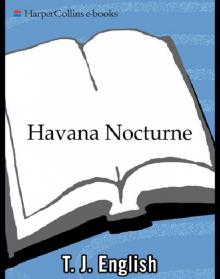 Havana Nocturne
Havana Nocturne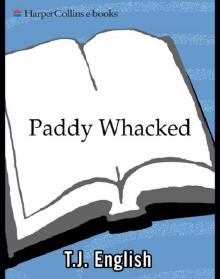 Paddy Whacked
Paddy Whacked American Gangsters
American Gangsters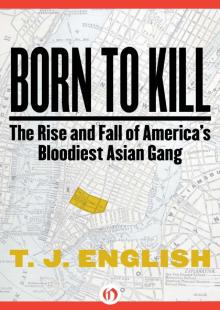 Born to Kill
Born to Kill Westies
Westies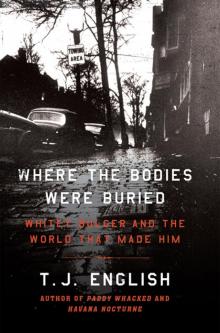 Where the Bodies Were Buried
Where the Bodies Were Buried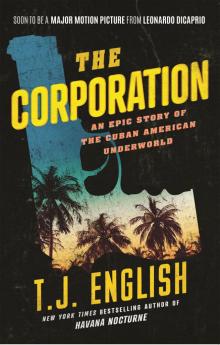 The Corporation
The Corporation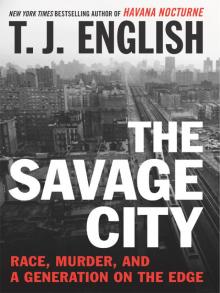 The Savage City
The Savage City